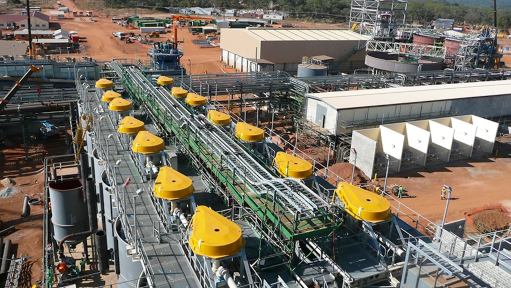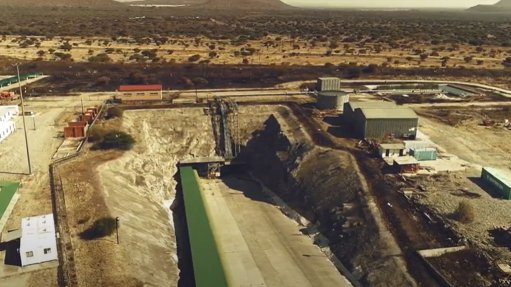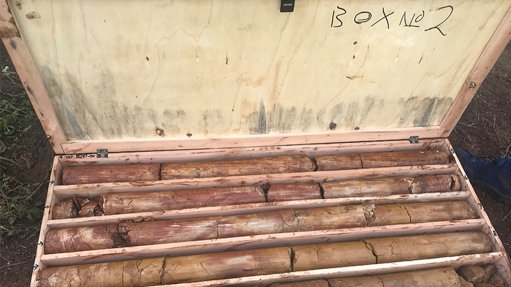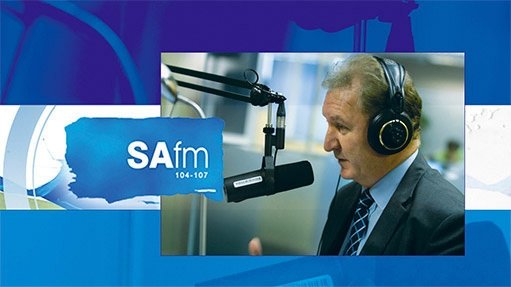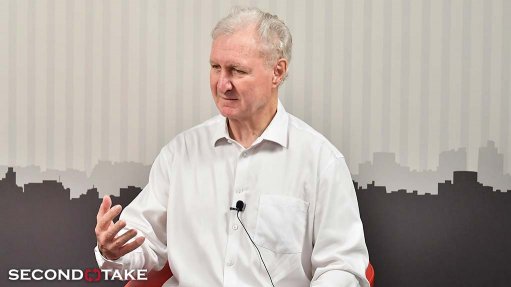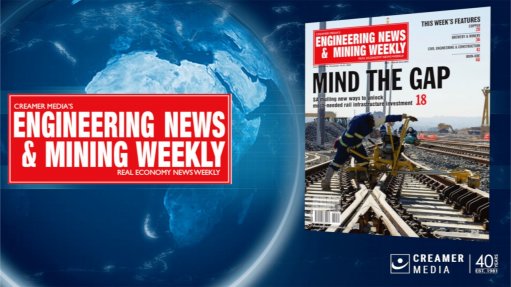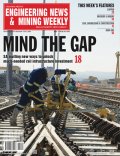ENS seminar shares insights with legal community, health and safety practitioners
Law firm ENS held a two-day mine and occupational health and safety seminar and webinar on November 21 and 22, during which it shared expert insight and legal knowledge of mine and general occupational health and safety laws and regulations with legal practitioners, health and safety personnel, and clients.
The first day focused on mine health and safety law, regulations and compliance, while the second focused on the wholly separate occupational health and safety law and regulations applicable outside the mining industry and compliance.
The sessions saw ENS directors Pieter Colyn, Celeste Coles, Warren Hendricks, Tyla Foster, Gerhardt Ehlers and executive consultant Willem le Roux fielding questions from the audience, including from those seeking clarity on the interpretation of a regulation and how a law would apply in a specific technical situation.
However, while the Occupational Health and Safety Act (OHSA) does not apply to mining, the Mine Health and Safety Act (MHSA), in Section 80, provides for the Mineral Resources and Energy Minister to declare certain provisions of the OHSA applicable to mines, said Le Roux.
“This provision has not been used since the introduction of the law, despite there being useful regulations in terms of the OHSA. For example, construction regulations do not apply to mining and we are of the view that the Minister should use Section 80 to extend some OHSA regulations to mine health and safety,” he said.
Le Roux, who had also participated in the Leon Commission of Inquiry that investigated the legal regulation of health and safety in the mining industry, gave attendees insight into the criminal liability of the employer and other persons in terms of common law and the MHSA.
He explained how various laws, including common law, held mining companies liable for failing to meet legal health and safety requirements and regulations. A person may be held liable for culpable homicide if such person caused the death of another through an unlawful and negligent act or omission. Negligence was tested by reference to the reasonable person, he said.
Further, in terms of MHSA compliance, the health and safety criterion is reasonable practicability. In order to hold a corporate body, such as a company, liable for contraventions of the law, the Criminal Procedure Act provides for vicarious liability in terms of which the corporate body may be held liable for the conduct of employees, directors or agents.
Meanwhile, ENS in March gave its input on the MHSA Amendment Bill. Feedback Le Roux received indicates that the Bill will only be tabled after the elections in 2024.
“It is astounding what government tries to introduce in this Bill. Discussions around corporate manslaughter in 2009 saw the then Department of Mineral Resources, trade unions and the Chamber of Mines agree not to introduce Section 86A, as it was too complex and difficult to implement and, in some regards, too harsh,” he said.
Section 31 of the MHSA Amendment Bill now aims to introduce Section 86 A(1), which states that an employer commits an offence if the employer contravenes or fails to comply with a duty in terms of Chapter 2 of the Act that results in a person's death, serious injury or illness.
Further, Section 86 A(2) provides that, if a CEO, manager, agent or employee commits an offence under the MHSA, then the employer is deemed as having committed an offence, if the act or omission fell within the scope of authority or employment of the person.
Further, the Amendment Bill, in Section 86 A(3) states that “the fact that the employer issued instructions prohibiting the act or omission is not in itself sufficient proof that all reasonable steps were taken to prevent the act or omission”.
Le Roux said that provisions of Section 86A (2) and (3) conflict with the Bill of Rights of the Constitution that provides that every accused person has a right to a fair trial, which includes the right to be presumed innocent, to remain silent and not to testify during the proceedings.
“We opposed many of the provisions in the MHSA Amendment Bill, among others the corporate manslaughter provision. The Bill has been referred to the National Economic Development and Labour Council, which has had several meetings concerning the issues in the Bill,” Le Roux said.
Additionally, Section 32 of the Amendment Bill seeks to substitute Section 92 with a clause stipulating that any employer or company that commits an offence in terms of the MHSA may be sentenced to a fine of 10% of yearly turnover.
“This is a harsh penalty and we oppose it.
“Further, the corporate manslaughter provision is unnecessary, as we have at present the common law crime of culpable homicide, which requires that negligence and causation must be proven,” he said.
“Additionally, the provision in Section 86A(3) that an instruction to prohibit an act or omission does not serve as sufficient proof of reasonable steps runs counter to the provisions of the MHSA and regulations,” he noted.
“For example, under Section 86A (4) of the Amendment Bill, if a mineworker, who had been required to properly install designed mine supports and comply with all necessary safety precautions, does not install all the supports as stipulated and then dies from a fall-of-ground owing to the lack of compliance, this would constitute an offence on the part of the employer.
“This is contrary to the presumption of innocence, the right to a fair trial and other provisions in the Bill of Rights.
“This is shocking and one can imagine what this would do to existing and potential investors in the mining industry,” says Le Roux.
“Parts of the Amendment Bill are badly drafted, such that some of the provisions contradict each other. We are hopeful that our opposition on certain provisions will be accepted,” Le Roux added.
Meanwhile, ENS mine and occupational health and safety executive and head of department Pieter Colyn spoke about an employer's liability for conduct of employees and other persons relating to mining and related activities.
He explained the concept of vicarious delictual liability. An employer may not be held liable for a delict, which is wrongful and blameworthy conduct that causes harm to a person, committed by the employer itself, but may be held liable for a delict committed by another person, such as an employee in the course and scope of employment, or by an independent contractor in exercising authority on behalf of the employer.
“The general rule of the common law of crime is that a person is not liable for the crime of another unless such person authorised or procured its commission or took part in it,” he noted.
However, vicarious criminal liability was possible in statutory crimes, where a statute may impose vicarious criminal liability either expressly or by implication by holding certain other persons guilty of the commission of a crime, in particular where they stood in a certain relationship to the actual perpetrator, such as, for example, the relationship between an employer and an employee, Colyn explained.
Further, he detailed employer and employee obligations under the MHSA, highlighting that any person who causes serious injury or illness to a person at a mine, or endangers the health and safety of a person at a mine through a negligent act or omission, commits an offence in terms of the Act.
“Any person may, therefore, include the employer, any employee and contractor working at the mine, and all of these persons may be charged with criminal transgressions of the MHSA,” he noted.
This is relevant for mine health and safety, as the MHSA and its regulations stipulate the obligations an employer must meet to ensure its operations are conducted safely, as far as reasonably practicable.
These obligations include ensuring that the employer must ensure, as far as reasonably practicable, that the mine is designed, constructed and equipped to provide conditions for safe operation and a healthy working environment, and provides and maintains a working environment that is safe and without risk to the health of employees. Employers must also conduct risk assessments and provide appropriate training to employees.
An employer was defined in the MHSA as an owner, which, in relation to a mine, among others, was the holder of the mining right or mining permit, Colyn added.
Various provisions of the MHSA place legal obligations on the employer. If these provisions are contravened by the employer, the employer may be held criminally liable.
Colyn encouraged mining companies to enter into health and safety agreements with independent contractors to ensure they understood and agreed to their role in ensuring health and safety on the mine, and these agreements should spell out the duties and obligations stipulated in terms of the MHSA and regulations to be complied with by the independent contractor.
Comments
Press Office
Announcements
What's On
Subscribe to improve your user experience...
Option 1 (equivalent of R125 a month):
Receive a weekly copy of Creamer Media's Engineering News & Mining Weekly magazine
(print copy for those in South Africa and e-magazine for those outside of South Africa)
Receive daily email newsletters
Access to full search results
Access archive of magazine back copies
Access to Projects in Progress
Access to ONE Research Report of your choice in PDF format
Option 2 (equivalent of R375 a month):
All benefits from Option 1
PLUS
Access to Creamer Media's Research Channel Africa for ALL Research Reports, in PDF format, on various industrial and mining sectors
including Electricity; Water; Energy Transition; Hydrogen; Roads, Rail and Ports; Coal; Gold; Platinum; Battery Metals; etc.
Already a subscriber?
Forgotten your password?
Receive weekly copy of Creamer Media's Engineering News & Mining Weekly magazine (print copy for those in South Africa and e-magazine for those outside of South Africa)
➕
Recieve daily email newsletters
➕
Access to full search results
➕
Access archive of magazine back copies
➕
Access to Projects in Progress
➕
Access to ONE Research Report of your choice in PDF format
RESEARCH CHANNEL AFRICA
R4500 (equivalent of R375 a month)
SUBSCRIBEAll benefits from Option 1
➕
Access to Creamer Media's Research Channel Africa for ALL Research Reports on various industrial and mining sectors, in PDF format, including on:
Electricity
➕
Water
➕
Energy Transition
➕
Hydrogen
➕
Roads, Rail and Ports
➕
Coal
➕
Gold
➕
Platinum
➕
Battery Metals
➕
etc.
Receive all benefits from Option 1 or Option 2 delivered to numerous people at your company
➕
Multiple User names and Passwords for simultaneous log-ins
➕
Intranet integration access to all in your organisation









